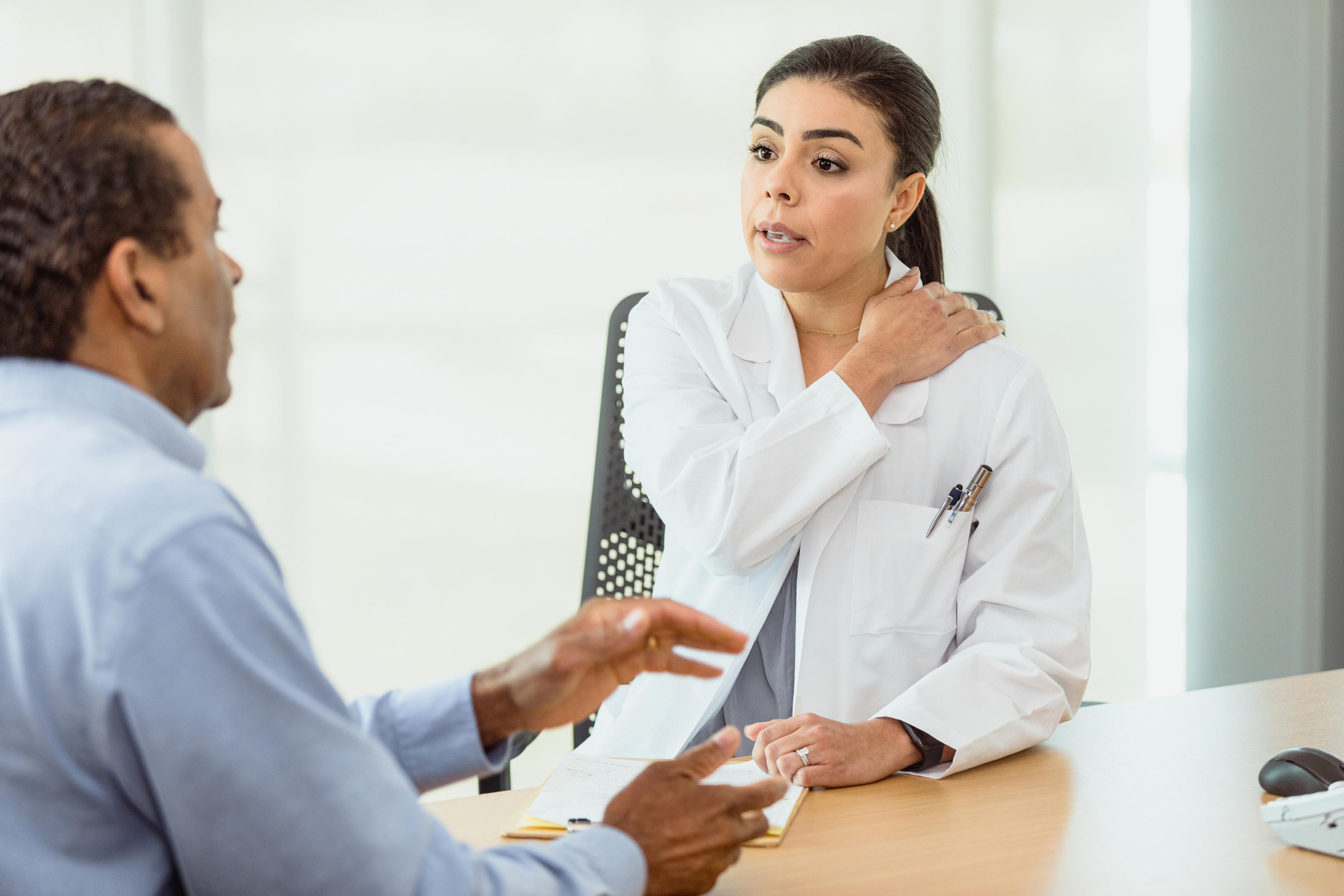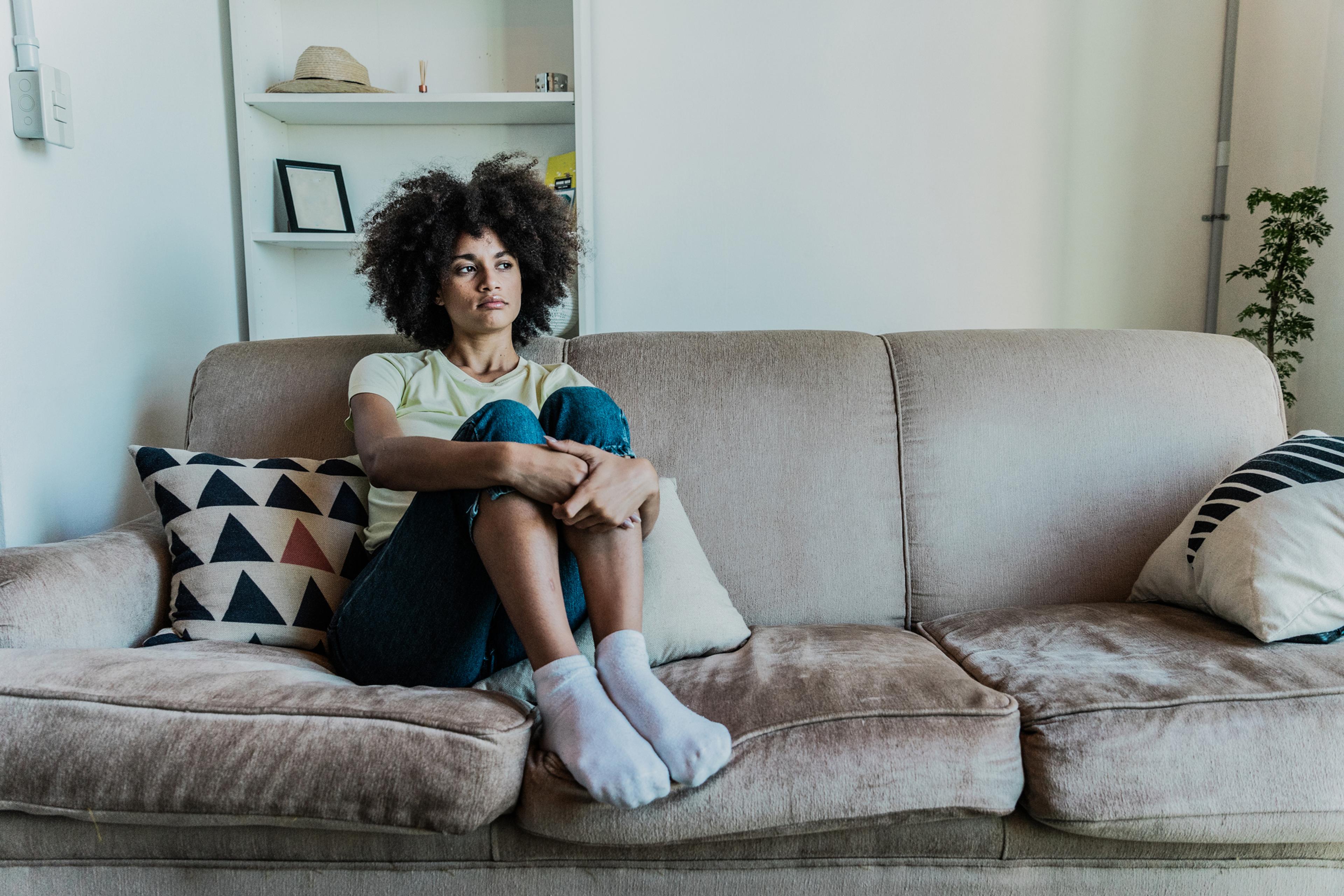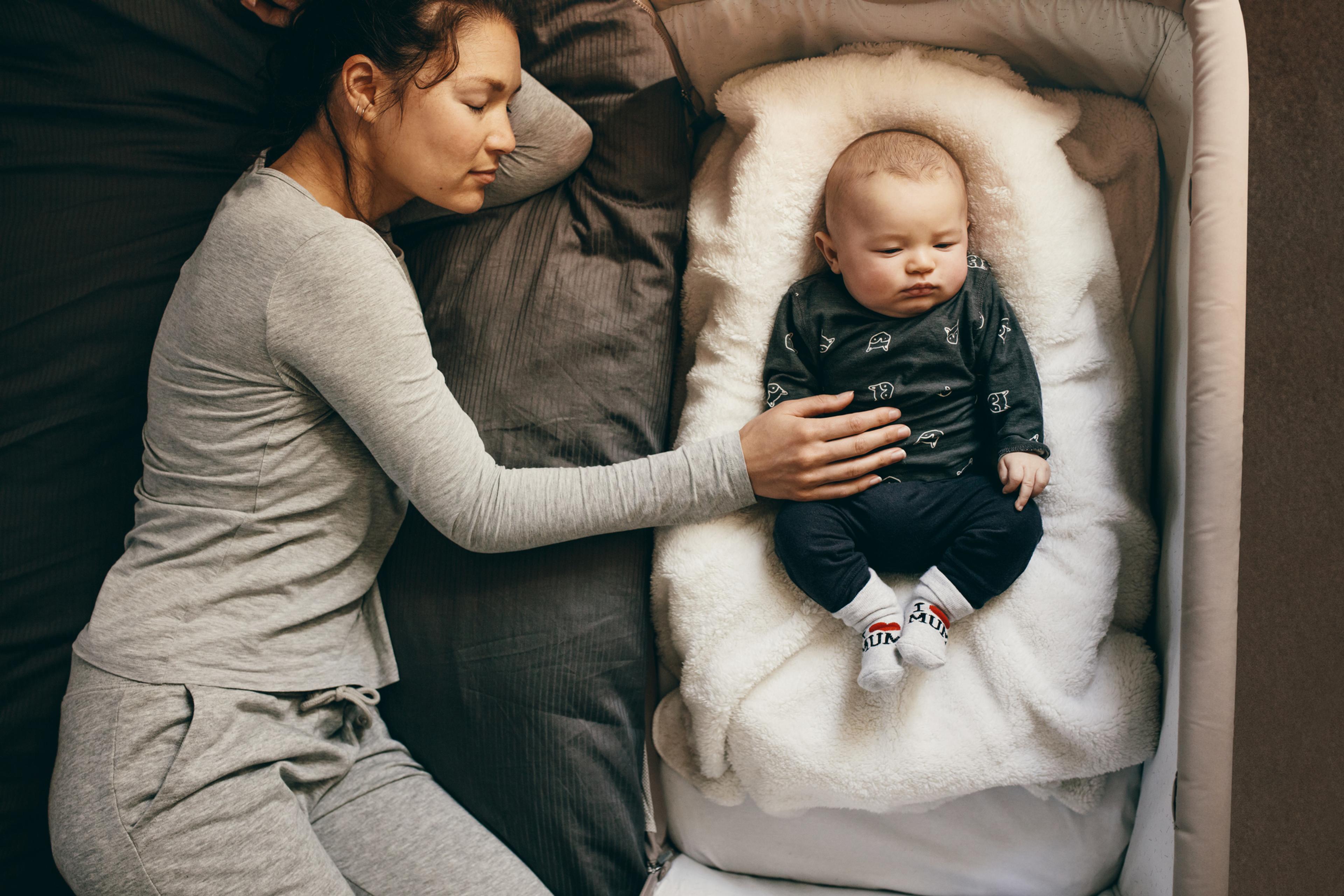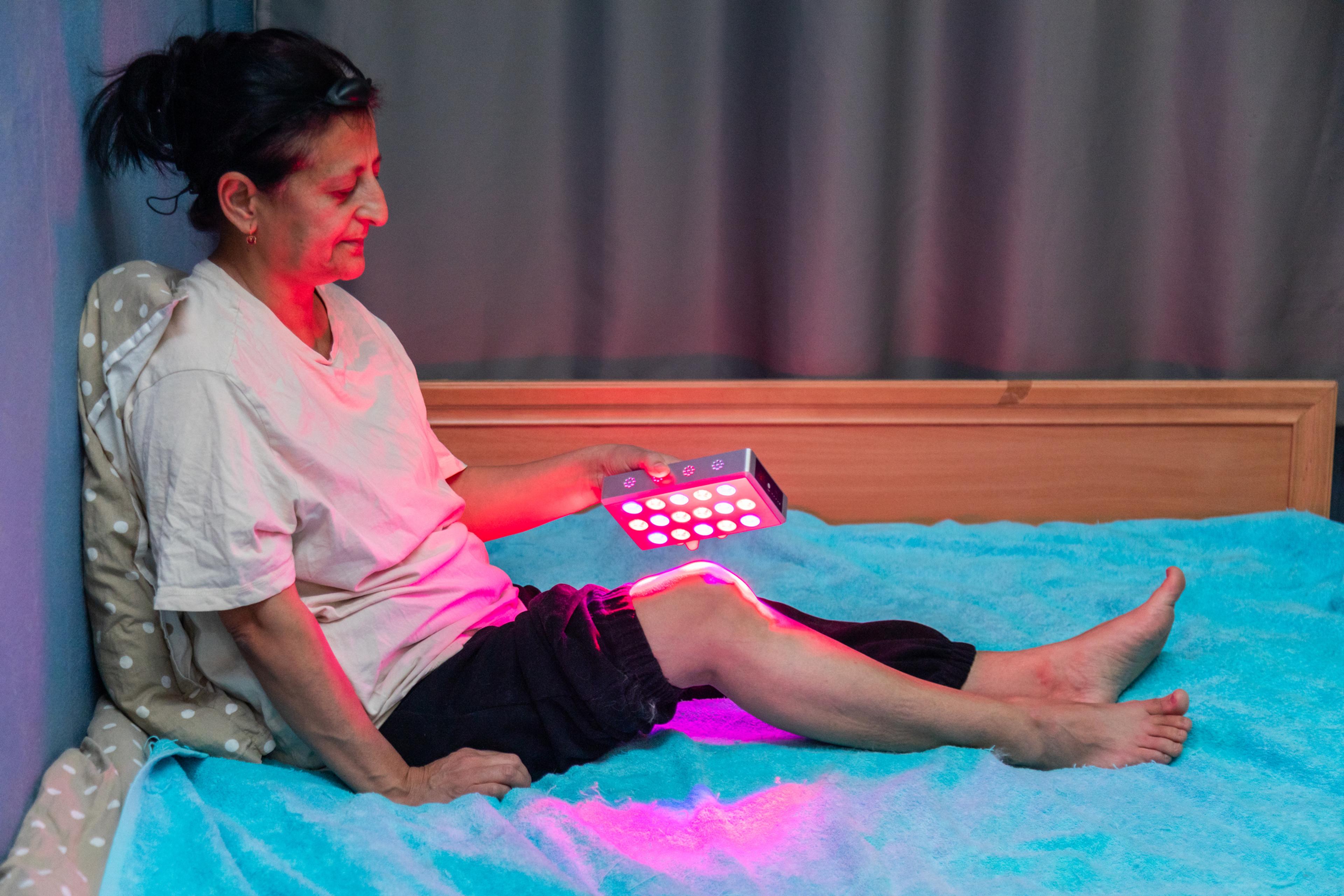What If I Don’t Want to Be Prescribed Opioids? How to Discuss Opioids with Your Doctor
Jake Newby
| 5 min read

In 2022, 8.5 million Americans aged 12 or older reported misuse of prescription pain relievers, according to the 2022 National Survey on Drug Use and Health. Opioid medications approved by the U.S. Food and Drug Administration (FDA) can treat certain types of acute and chronic pain, but they also carry serious risks, such as overdose and addiction.
Some individuals seek out opioids to manage moderate-to-severe pain. Others may do their best to avoid a prescription. There are considerations to make and questions to ask your primary care physician (PCP) before requesting or accepting prescribed opioids. An effective pain treatment plan that doesn’t involve medication may be right for you.
Questions to ask your doctor about prescribed opioid medication
Your PCP may use the numeric rating scale (NRS), a pain assessment tool that uses a 0-to-10 scale to measure pain intensity and gauge your pain. However, the NRS can be flawed, as clinicians may be more likely to over-treat or prescribe more medication based on a patient’s self-assessment.
The NRS can sometimes offer a good baseline, but you should be as transparent and as descriptive as possible when discussing your pain level with your PCP. Consider putting it into perspective by comparing it to the worst pain you’ve ever experienced. It can also be helpful to discuss how your recent days and weeks have gone to put your pain into better context. For example, does your pain resurface most often when you are eating, walking, attempting to sleep or while doing certain activities? Doing this can help your PCP identify trends.
Additionally, here are some important questions to ask as you discuss the possibility of using prescribed opioids:
Will I develop an opioid use disorder?
Anyone taking prescription opioids is at risk for unintentional overdose and can become addicted. The U.S. Centers for Disease Control and Prevention (CDC) recommends using a prescribed opioid only when pain is severe and to stop using it as soon as possible to avoid these potentially fatal issues. From 1999 to 2022, nearly 290,000 Americans died from overdoses involving prescription opioids.
It is also possible to develop a high tolerance. This could lead to a need or desire for higher doses to relieve pain over time, which also puts you at higher risk for a fatal overdose, according to the CDC. Developing a physical dependence is another possibility. Dependence can cause withdrawal symptoms when the medication is stopped.
What if I have a history of substance use disorder?
Tell your PCP if you or anyone in your family has a history with substance use disorder involving drugs or alcohol. It’s particularly important to tell your PCP if you have an active issue with drugs or alcohol as it is extremely dangerous to combine opioids with other drugs, especially those that make you drowsy. Be sure to mention any other medications you are currently on, as that could affect treatment. According to the CDC, your risk for overdose increases when your opioid medication is combined with:
- Alcohol
- Benzodiazepines (also known as "benzos," including diazepam [Valium®] and alprazolam [Xanax®])
- Other opioids (prescription or illicit, including heroin)
- Other sedatives like certain sleep medicines and muscle relaxants
What treatment alternatives to opioids are available?
Research has found nonopioid treatments to be safer than opioids and in many cases, as effective in treating many types of acute, subacute and chronic pain. These options can include:
- Behavioral treatments: cognitive behavioral therapy takes a psychological approach to changing an individual’s physical, behavioral, and emotional response to pain and stress.
- Nonopioid medications: acetaminophen (Tylenol®), topical and oral nonsteroidal anti-inflammatory drugs (NSAIDs) like ibuprofen (Advil®), gabapentin, and while anti-depressant medications need a prescription, some types of herbs and supplements have been shown to relieve certain types of pain, according to the CDC. They are options to treat headaches, back pain and pain experienced during surgical dental recovery.
- Nonopioid, nonpharmacologic therapies: exercise, physical activity, physical therapy, acupuncture and massage therapy can reduce pain and improve function in some cases.
- Transcutaneous electric nerve stimulation (TENS): TENS uses modifiable, low-voltage, battery-powered electric current to stimulate nerves for therapeutic purposes, including pain reduction. TENS is generally safe for most people.
What to know if you are prescribed opioids for pain
If you do begin taking prescription meds, take your medicine exactly as prescribed. Do not take an extra dose if you still feel pain; instead, call your PCP for additional guidance.
How long should I take this medication?
Find out when, and how, to stop using opioid pain medicines. The FDA recommends asking your PCP to prescribe the lowest dose possible for the shortest time needed and the smallest quantity you may need. You should also ask about the best time to follow up to discuss whether the medication is effectively controlling your pain.
What are the side effects of this medication?
Discuss the side effects of opioid pain medicines with your PCP. They often include
- Constipation
- Dizziness
- Drowsiness
- Nausea
- Weakness
Learn to identify these side effects so you and your family can pinpoint when to call a doctor or seek immediate medical help. In the extreme case of a possible overdose, discuss the possibility of keeping naloxone (Narcan) on hand, a potentially life-saving drug that can reverse the effects of opioid overdose.
How should I store my opioid pain medicine?
Properly storing prescription opioids is particularly important if you have children at home. Consider keeping medications in a lockbox for your medications. Even one accidental dose of an opioid pain medicine meant for an adult can cause a fatal overdose in a child, according to the FDA.
What should I do with unused opioid pain medicine?
Once your pain has subsided, dispose of unused opioids promptly as leftover opioids can be targeted by people who you’d never expect to take them, according to the FDA, including friends, relatives and even your children and their friends.
If there is no drug take-back program near you, the FDA has created this list of opioid pain medicines the organization recommends flushing down the toilet when they’re no longer needed to avoid accidental exposures to opioid pain medicine in the home.
Some pharmacies have on-site medicine drop-off boxes, mail-back programs and other ways to help safely dispose of unused opioids, so ask your pharmacist about those potential options.
Read on:
- “It Changed My Life:” Patients Supported by BCBSM’s Strengthening the Safety Net Program Discuss the Crucial Impact of Free Clinics
- The Difference Between COVID-19 and the Flu
- Teen HYPE Amplifies the Voices of Black Youth in Detroit Through Innovative Mental Health Programming
Photo credit: Getty Images





